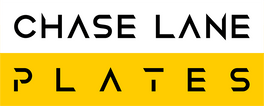Your Ultimate Guide to UK Motorcycle Number Plate Legislation
Feb 10, 2025
Choosing the right number plate for your motorcycle isn't just about aesthetics; it's about adhering to the law. UK legislation surrounding motorcycle number plates is specific and can be surprisingly complex. This guide breaks down the key regulations you need to know, ensuring your bike is road-legal and you avoid any potential fines or penalties. Whether you're looking for a replacement plate or want to upgrade your current one, this guide will steer you in the right direction.
Understanding the Legal Framework
The primary legislation governing UK number plates is the Road Vehicles (Display of Registration Marks) Regulations 2001, as amended. This legislation sets out the rules regarding the size, font, spacing, and materials used for number plates, as well as how they must be displayed on vehicles, including motorcycles. It's crucial to be familiar with these regulations, as non-compliance can lead to fines of up to £1,000 and even vehicle impoundment.
Key Regulations for Motorcycle Number Plates
Let's delve into the specific regulations that apply to motorcycle number plates:
-
Size and Dimensions: Motorcycle number plates have specific size requirements, which are different from those for cars. The standard size is 228mm wide by 178mm high. These dimensions are strictly enforced, and any deviation can be considered illegal.
-
Font and Character Spacing: The characters on your number plate must conform to the prescribed Charles Wright font. This font is designed for clarity and readability, and any variations are prohibited. Furthermore, the spacing between characters and between the registration mark and the border is also strictly regulated. Incorrect spacing can make your plate appear altered, even if it isn't, and can result in penalties.
-
Materials: The number plate itself must be made from a reflective material that meets British Standards (BS AU 145e). This ensures that the plate is clearly visible in all lighting conditions. The background of the plate must be either black or yellow, depending on the age of the motorcycle. Motorcycles registered after 1st January 1980 must have a yellow background at the front and a black background at the rear. Motorcycles registered before this date can have a black background with silver/white characters on both the front and rear.
-
Display: Motorcycle number plates must be displayed in a prominent and easily readable position. The rear plate must be illuminated at night. Both front and rear plates must be securely fixed to the motorcycle and must not be obscured by any parts of the bike or other objects. It's also illegal to display a number plate in a way that is likely to mislead or deceive.
-
Nationality Identifier: Since Brexit, number plates no longer need to display the GB identifier. However, if you are driving outside of the UK, you may need to display a separate UK sticker on your vehicle. Check the specific requirements for the countries you are visiting.
-
Show Plates: "Show plates" or "novelty plates" that don't comply with the legal requirements are not permitted for road use. These plates might be used for display purposes only, but they are illegal to be displayed on a motorcycle on public roads.
What to Look for When Buying a Motorcycle Number Plate
When purchasing a motorcycle number plate, it's essential to ensure that it complies with all the legal requirements. Here are some key things to look out for:
-
Reputable Supplier: Choose a reputable supplier, like Pressed Number Plates, who specialises in manufacturing number plates that meet British Standards. This will give you peace of mind that you are buying a legal and high-quality product.
-
BS AU 145e Compliance: Ensure the number plate material complies with BS AU 145e. This is a legal requirement, and a reputable supplier will be able to confirm compliance.
-
Correct Size and Font: Double-check that the plate's dimensions and the character font and spacing are correct. Don't hesitate to ask the supplier if you have any doubts.
-
Reflective Material: Verify that the plate is made from the correct reflective material. This is crucial for visibility and road safety.
-
Clear and Unobstructed Display: Consider how the plate will be mounted on your motorcycle and ensure it will be clearly visible and not obstructed.
-
Legal Markings: Check for the presence of the legal markings, including the supplier's name and postcode, which are required on all number plates.
Common Mistakes to Avoid
-
Using Incorrect Font or Spacing: This is a common mistake that can lead to fines. Always ensure the characters conform to the Charles Wright font and the spacing is correct.
-
Displaying a Non-Reflective Plate: Using a plate that is not made from reflective material is illegal and dangerous, especially at night.
-
Obscuring the Plate: Make sure your number plate is not obscured by any part of your motorcycle or other objects.
-
Using a Show Plate on the Road: Remember that show plates are not legal for road use.
-
Altering or Misrepresenting a Plate: Tampering with a number plate in any way is a serious offence.
Conclusion
Navigating the UK legislation surrounding motorcycle number plates can seem daunting, but by understanding the key regulations and choosing a reputable supplier, you can ensure your bike is road-legal and looks great. Remember, safety and legality should always be your top priorities. By following this guide, you can confidently choose the perfect number plate for your motorcycle and enjoy the open road with peace of mind. Browse our range of high-quality, legally compliant motorcycle number plates at [Your Website Name] and find the perfect match for your ride.


